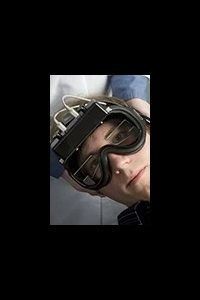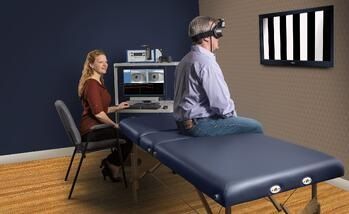3 Balance Testing Technologies You Should Know About

Over the past several years, we’ve seen some amazing advancements in the testing of the vestibular function. However, despite the advent of these technologies, many physical therapists are content to stick to the “gold standard” vestibular testing methods they’ve relied on for years. What many don’t realize is that these new technologies aren’t meant to replace these methods, but rather complement them and provide more specific and accurate results.
Below is a review of powerful vestibular screening and diagnostic innovations that can help you diagnose and treat disorders with more precision.
Video Goggles
Using infrared technology, video goggles provide a clear view of eye movements during oculomotor, positional, and caloric testing. By helping you differentiate between central and peripheral vestibular pathology, they make it easier for you to accurately diagnose and treat patients with dizziness and vestibular disorders. In addition to being able to project and observe tests on a large screen, this technology also records examinations in their entirety for educational and legal purposes.
What makes infrared video goggles so effective is their ability to prohibit patients from fixating their eyes on anything. As a result, you can better observe the direction of the nystagmus and record eye movements for further review following the initial assessment. Some products, such as RealEyes xDVR Binocular Video Goggles from Micromedical Technologies, can be used during the Dix-Hallpike test for BPPV, and can enable the examiner to observe subtle differences between left- and-right-eye responses.

Rotational Chair Testing
The most recent innovation in vestibular testing, rotational chairs, use video goggles to record eye movements while the patient is rotated and shown different lights and patterns. Made for the purpose of determining whether or not dizziness may stem from a disorder in the inner ear or brain, rotational chairs have proven to be more effective than ENG tests by themselves. This technology is especially effective when you test patients with dizziness, traumatic brain injury (TBI), or chronic traumatic encephalopathy (CTE).
More advanced products, like the System 2000 Auto-Traverse Rotational Vestibular Chair from Micromedical Technologies, offer a bevy of features that enable a wider variety of testing possibilities and ensure more accuracy. Its XY laser projector produces a red dot on the booth wall for vertical and horizontal gaze, pursuit, and saccade tests, and its off-axis otolith testing capabilities enables separate observation of left and right ear otolith organs.
Head Impulse Testing

FDA approved since 2013, video head impulse test (vHIT) devices leverage high-speed cameras to capture eye movements before, during, and after a head thrust. Testing resembles basic head thrusting, but produces a quick and objective evaluation of the vestibulo-ocular reflex in response to head movements made in daily activities. Results yield immediate information regarding side-specific vestibular function, allowing you to efficiently assess a dizzy patient and confidently determine whether their dizziness is related to a vestibular disorder.
Industry-leading vHIT products like Micromedical’s EyeSeeCam display overt and covert saccades, gain and 3D graphics. Additionally, they can test the left or right eye and measure instantaneous gain and velocity regression. They display head and eye movement in real time, analyze test data, and generate a graphical presentation of the results for easy analysis. All of this better equips you to pinpoint the cause of your patient’s dizziness and determine further recommendations for treatment.
Embracing Innovation
Although the aforementioned technologies are a large investment for any healthcare professional, they’re well worth the money. None are meant to be a complete replacement for anything in the current vestibular test battery. Instead, they’re intended to serve as complementary examinations to confirm a specific diagnosis and increase accuracy. Sure, their high price tags are accompanied by a steep learning curve, but it’s a small price to pay considering how much they can benefit you and your patients.
When the time comes for you to equip yourself with the latest and greatest in vestibular screening and diagnostic technology, make sure you thoroughly research all offerings on the market. Ask any colleagues who are using these technologies for advice and recommendations. Go on manufacturer’s websites and compare prices, features, and differentiators. Even go as far as getting in touch with sales people to see if you can request a demonstration. This is a big decision that can drastically improve your balance testing procedures, so be thorough and careful to ensure you don’t end up with buyer’s remorse.
